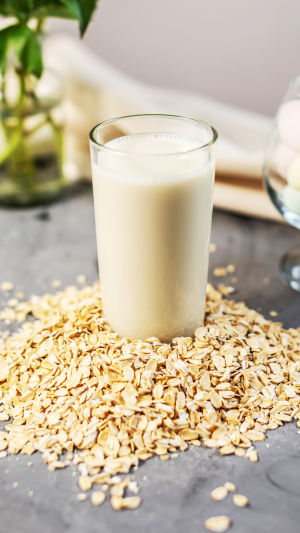Soybean milk is an incredibly healthy beverage made primarily from soybeans, including both soybeans and black beans.
Soybeans are abundant in high-quality protein, fats, various vitamins, minerals, dietary fiber, and phytochemicals, making them highly nutritious.
Despite being plant-based, soybeans provide excellent protein quality, as their amino acid composition closely matches the body's requirements.
This results in a protein of remarkable quality, boasting high absorption and utilization rates, similar to animal proteins. This is why soybeans are often referred to as "the meat that grows in the land."
For breakfast, soybean milk can be an excellent alternative to cow's milk. Soybeans are also rich in unsaturated fatty acids and lack cholesterol, making soybean milk a suitable choice for the elderly and those with cardiovascular conditions.
The dietary fiber in soybean milk aids in promoting healthy gastrointestinal movement, aiding in the prevention of constipation and intestinal cancer.
There are generally two types of soybean milk: raw soybean milk and cooked soybean milk. Raw soybean milk features a fragrant bean flavor, while cooked soybean milk resembles the texture of bean paste with a strong flavor.
1. Raw Soybean Milk
Raw soybean milk doesn't mean the milk is raw. It refers to the soybeans being raw and directly used to make the milk. The flavor of raw soybean milk is distinctly rich and fragrant.
Raw soybean milk can be made from dry beans (soybeans not soaked beforehand) or wet beans (soaked overnight). Some modern blenders can directly turn dry beans into fine soybean milk.
2. Cooked Soybean Milk
Cooked bean soybean milk involves soaking soybeans first, and then boiling them in a pot until they are fully cooked. Afterward, water is added before blending everything into soybean milk. The process might seem a bit complex.
While soybeans should remain the main ingredient in soybean milk, you can enhance its flavor and nutrition by incorporating other components:
1. Nut Additions
Adding nuts like walnuts, almonds, cashews, and peanuts can enhance flavor and nutrition. However, due to their high-fat content, moderation is key to avoiding excessive calorie intake.
2. Whole Grain Inclusion
Whole grains like oats, corn, buckwheat, and sorghum can be added. They are rich in carbohydrates and starch, so adding them in moderation prevents the soybean milk from becoming overly thick and maintains a reasonable glycemic index. This holds particular significance for people with diabetes.
3. Dried Fruit Infusion
Incorporating dried fruits like red dates, raisins, dried cranberries, and dried apricots can add natural sweetness without the need for extra sugar. These dried fruits contribute to flavor regulation and bolster the nutritional profile of soybean milk.





